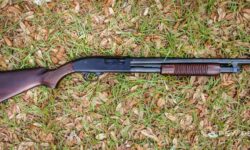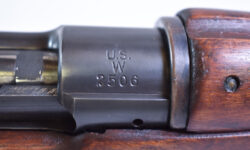VALKYRIE 224 VS 556: QUICK ROUNDUP
Just when I thought that the world of guns couldn’t get any bigger, I learned more about the different bullets. There a lot of fellows like me who do not know a thing about the difference between the different types of bullets. There isn’t much help readily online, so I thought, why not compile what I read and write it as if it were for me before I began this journey?
First and foremost, it should be understood that bullets have three main components: the cartridge, the projectile, and the powder inside the cartridge that launches the projectile. The powder makes a difference, especially in the velocity and acceleration of the projectile when fired from a gun. I will also discuss some similarities and differences between the two popular bullets.
Valkyrie 224 vs 556: Overview & Comparison
First, let us list the specs, which are lifted from various images of measurements and the 224 Valkyrie Wikipedia page:
- Overall length: 2.25 inches / 54.7 mm
- Case length: 1.6 inches / 41 mm
- Rim thickness: 0.049 inches / 1.2 mm
- Rim diameter: 0.422 inches / 10.7 mm
- Base diameter: 0.4207 inches / 10.69 mm
- Shoulder diameter: 0.4031 inches / 10.24 mm
- Neck diameter: 0.256 inches / 6.5 mm
- Bullet diameter: 0.2245 inches / 5.7 mm
The 224 Valkyrie is a rimless bottlenecked cartridge. It was introduced in 2017 by Federal Premium, which highlighted a few features that made the 224 Valkyrie needed in a world with so many different types of bullets.
First of these is the amount of recoil reduced when pitted against a 6.5 Creedmoor. Target acquisition is challenging with recoil. Reducing such is a gamechanger in high-intensity situations.
Another additional feature is the less wind drop. Higher velocity in a bullet logically means more speed and accuracy. This is true, especially in long-range distances. Several reviews have compared the 224 Valkyrie to the .223 Remington in varying distances. All of them agree that the bullets are at par with each other at 500 meters, but beyond that, the 224 Valkyrie comes out as the superior bullet.
Pros and Cons
The pros of the 224 Valkyrie are:
- Good velocity;
- Less wind drop; and
- Great for long-range distances.
The cons, however, are:
- Relatively new to the game; and
- Expensive compared to the ones already available and tested on the market.
556 NATO Overview
For the 556 NATO, here are the specs:
- Overall length: 2.26 inches / 57.4 mm
- Case length: 1.76 inches / 44.7 mm
- Rim thickness: 0.045 inches / 1.14 mm
- Rim diameter: 0.378 inches / 9.6 mm
- Base diameter: 0.377 inches / 9.58 mm
- Shoulder diameter: 0.354 inches / 9 mm
- Neck diameter: 0.253 inches / 6.43 mm
- Bullet diameter: 0.224 inches / 5.7 mm
Once again, the specs are often from various images and the Wikipedia article for 556 NATO Ammo. Like the 224 Valkyrie, it is rimless and bottlenecked. However, the 556 NATO is tapered at the end of the bullet. It was designed in the 1970s and improved throughout the 1980s by FN Herstal.
Unlike the 224 Valkyrie, on the other hand, 556 NATO Ammo has a long history surrounding it. Many articles and reviews interchange it with .223 Remington or Rem for short. However, one review stated that although similar in a lot of things, the 556 is more frequently used with higher pressure weapons.
The same review also taught me a golden rule of thumb: .223 will only safely shoot out of .223 chambers, while 5.56 chambers can safely shoot 5.56 and .223. I will add this to the Picatinny and Weaver rail rule. However, it is worth noting that .223 Wylde is different from .223 Remington in the fact that the former can shoot both 5.56 and .223. A little confusing, but one can get used to it.
Pros and Cons
The pros are:
- More choices for shooters, whether beginners, enthusiasts, or professionals;
- Rule of thumb when it comes to chambers;
- Can deal with higher pressure; and
- Cheaper than its co-reviewee.
The one con is:
- Can be a little confusing when buying ammo for yourself, especially the rule of thumb.
Conclusion
Considering everything that I have gathered above, I am concluding that it is still better to stick to the old but tested and proven by thousands of shooters across the country and around the world.
It is no easy feat to make a different bullet. However, if I were to spend my hard-earned money, I’d instead invest in something solid and much more inexpensive. Another reason is that I never really venture beyond 500 feet of range. Sure, I might need it for self-defense; however, I do not feel like it’s worth investing in something that is double the price of what I am used to.
Maybe in the future, I might be able to open up to the relatively new bullet that is 224 Valkyrie. However, for now, I am sticking to what I know and choosing the 556.
[sc name=”faq3questions” a1=”Valkyrie 224 vs 556 Comparison” a2=”We analyzed 19 forum threads, researched 14 sources, evaluated 75 reviews and spent 9+ hours on our analysis.” a3=”I am concluding that it is still better to stick to the old but tested and proven by thousands of shooters across the country and..” ]


